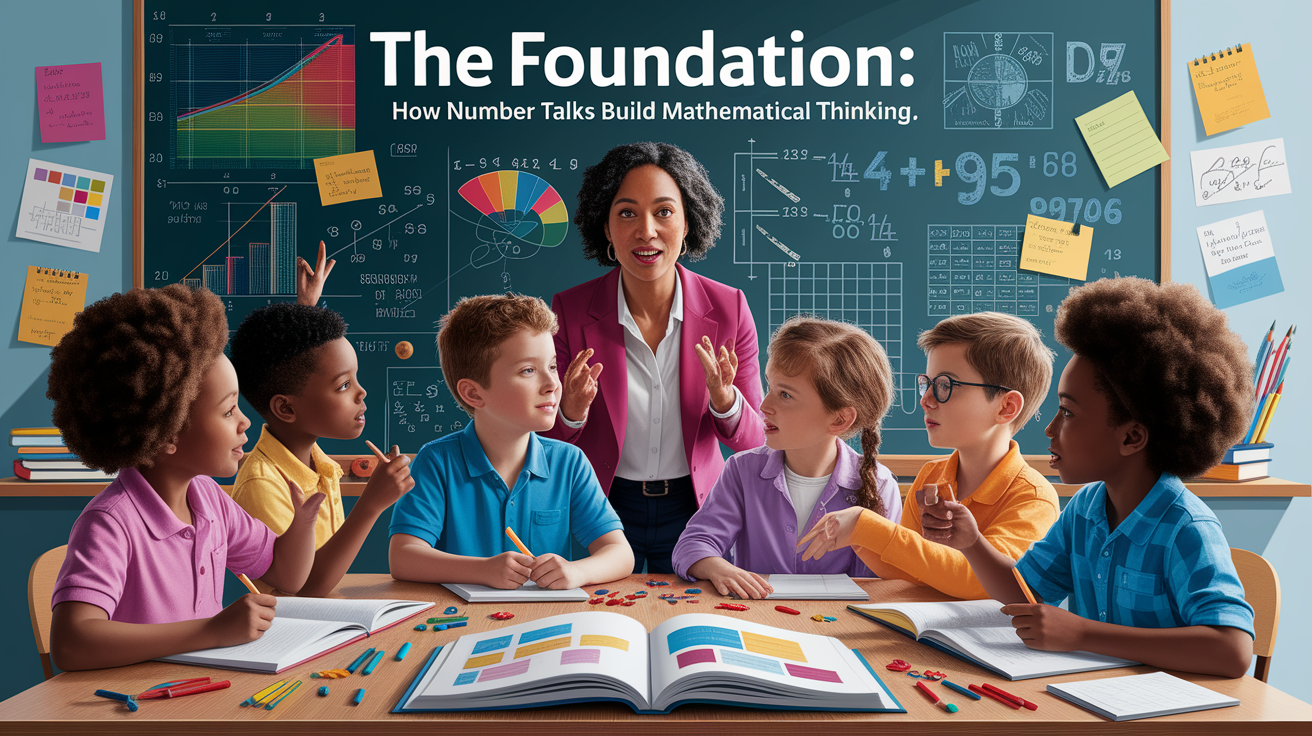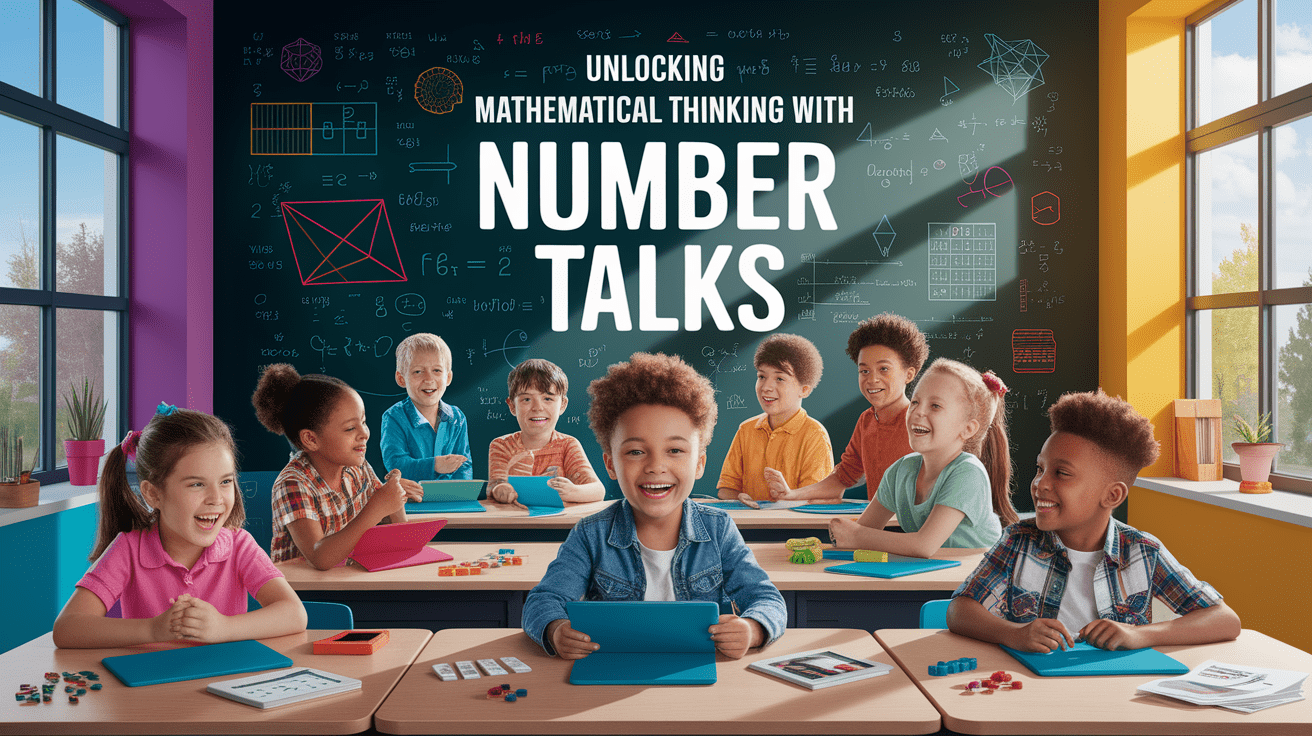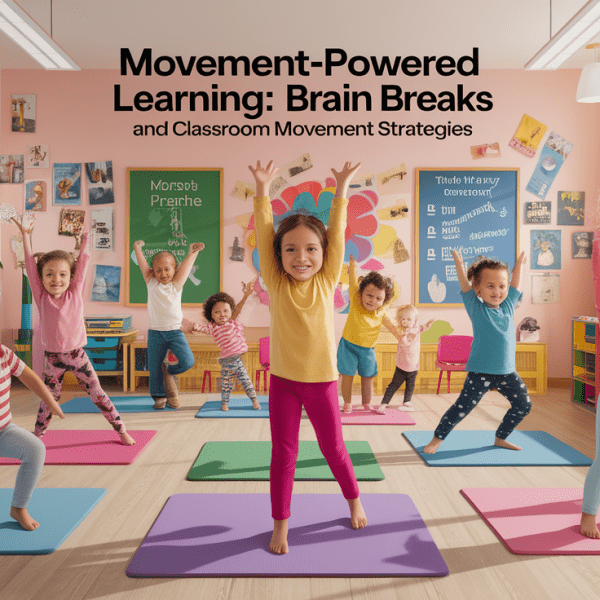Sparking Math Minds: Introduction to Number Talks
Imagine a classroom buzzing with curiosity, where students eagerly share ideas, challenge each other’s thinking, and grow their confidence with numbers. That’s the magic of number talks—short, structured math conversations that focus on solving problems mentally and discussing strategies. Instead of diving straight into formulas or rote memorization, students work on building number sense, using different mental math strategies, and learning from each other’s reasoning. These sessions typically last 5–15 minutes, but the impact stretches far beyond the clock, fostering a classroom environment where diverse approaches are embraced and every learner sees themselves as a mathematician.

The Foundation: How Number Talks Build Mathematical Thinking
Number talks are more than a quick warm-up—they’re a powerful math pedagogy tool that nurtures deep mathematical reasoning. By encouraging students to share multiple ways to solve a problem, they promote flexible thinking, number fluency, and meaningful mathematical communication. Students develop strong numeracy skills by exploring number relationships, estimation strategies, and visual representations.

A major benefit is the growth of mathematical mindset: students begin to see mistakes as learning opportunities, reducing math anxiety and boosting confidence. Teachers gain valuable formative assessment insights by observing students’ explanations and decision-making processes. This is especially important for encouraging active student engagement and discourse in elementary mathematics, paving the way for stronger conceptual understanding.
Getting Started: Practical Steps for Facilitating Number Talks
Ready to bring number talks into your classroom? Here’s a step-by-step guide to building this engaging practice:

- Pose a mental math problem: Choose a question that students can solve without pencil and paper, such as addition, subtraction, multiplication, or division involving clever number combinations.
- Allow for wait-time: Give students 30–60 seconds of silent thinking to develop their mental math strategies.
- Invite multiple solution strategies: Ask students to share different approaches, whether they are based on number decomposition, rounding, or visualization.
- Record all strategies: As facilitator, write them on the board—correct and incorrect—so students can analyze and compare.
- Encourage justification: Prompt students to explain their thinking; this deepens understanding and strengthens math vocabulary.
You can find practical inspiration in studies like research on implementing number talks to improve number sense and computational fluency in elementary classrooms. Remember, the goal is to celebrate diverse thought processes and nurture flexible problem solving.
Tips and Tricks: Overcoming Common Challenges
Like any new classroom routine, number talks can have bumps in the road. Here are some tips to make your journey smoother:

- Start simple: Begin with problems that are accessible to all learners, gradually increasing complexity as students’ confidence grows.
- Foster a safe space: Encourage a culture where students know their ideas will be respected, even if they’re still developing them.
- Manage time wisely: Keep sessions tight and focused to maintain high engagement.
- Balance voices: Use strategies from encouraging math discourse to ensure participation from less vocal students.
- Differentiate for diverse learners: Provide entry points for students with different skill levels, and use visual or verbal methods to reinforce understanding.
As noted by LD@school’s insights, number talks can be adapted effectively for students with learning disabilities, helping them express mathematical ideas without relying solely on written calculations.
Wrapping Up the Talk: Next Steps for Number Talks
Once your number talks routine is up and running, keep the momentum by reflecting after each session. Use observations to guide future problem selection, create connections to upcoming math concepts, and document student progress. Consider professional development opportunities, like reviewing guidance from Pedagogy Non Grata, to expand your repertoire of mental math strategies and problem types.
Over time, you’ll see how these short discussions transform your classroom culture—boosting student engagement, developing robust number sense, and fostering joy in mathematical discovery. Your students will not only sharpen their computational fluency but also learn to think flexibly, articulate their reasoning, and collaborate meaningfully. In short: you’ll be unlocking their mathematical thinking, one number talk at a time.




